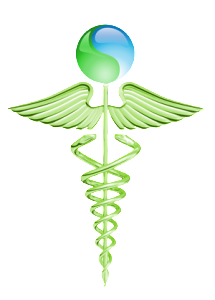
Bladder endometriosis, if left unmanaged, can lead to more severe urinary problems in the future. This ailment, which plagues over 1.5 million people in the U.S. and Canada, is a gynecological disease that only afflicts females in their reproductive years. A woman who has bladder endometriosis has endometrium cells, the medical term for cells from the uterus, developing in her bladder.
Indications that you have bladder endometriosis
Some patients suffering from bladder endometriosis are asymptomatic for the first few years. They will only realize that they have the disease when it is already in its serious stage, manifesting more severe symptoms.
The most common complaint of women that have such an ailment is pain in the abdominal or pelvic area. The degree of pain can be mild to severe or acute.
Usually, the soreness and aches in the bladder region will be more intense during your monthly period. A lot of women suffer from endometriosis silently because they feel that the pain is just the normal pain of premenstrual syndrome.
However, if the pain you’re feeling hampers your normal activities, such as going to work or school, you should visit your doctor and get yourself checked over.
Keep reading for more information on this conditions and sign up for our free newsletter below, covering the endometriosis signs and symptoms in detail plus natural treatment options that provide effective pain relief.
Women with bladder endometriosis also experience various urinary troubles. Since misplaced cells growing in your bladder should not be there, it is common to feel a burning sensation when you are peeing. Sometimes, you can also find pus or blood in your pee.
Since the cause of your urinary problems is endometrium cells in your bladder, no amount of antibiotics will cure or alleviate the symptoms. Remember, antibiotics are only used for bacterial infection. Since your problem is due to cells that have gone astray, anti-bacterial medications will do little to help you remedy the situation.
Sometimes, women suffering from this chronic conditon also experience the urge to urinate a lot. Quite a number of women find it difficult to leave their homes because of the need to urinate so frequently and it can lead to disturbed sleep patterns too.
If bladder endometriosis is left unmanaged, it might lead to urinary obstruction or incontinence, which is a condition where you won’t be able to control your bladder or urinary functions.
Diagnosing bladder endometriosis
The presence of the above symptoms does not guarantee that what you have is bladder endometriosis. Patients with interstitial cystitis (IC), also commonly known as painful bladder syndrome, complain of many of the same symptoms.
However, if you are feeling the above symptoms and you are a man who is not undergoing any hormone therapy or treatment, then you can rule out bladder endometriosis as you don’t have a womb, thus no endometrium cells will be misplaced in your bladder.
To help determine whether you are suffering from interstitial cystitis or bladder endometriosis, you need to have the potassium level in your urine checked. People suffering from IC usually have elevated levels of potassium.
If you want to know for sure if you have bladder endometriosis, you will need to undergo cystoscopy in which a doctor will insert a cystoscope into your urethra. This device will not only help your doctor see your bladder, but take cell samples for testing as well. This is the best way to have an accurate diagnosis of bladder endometriosis.

Source by Shelley Ross
 Vitamin Agent The Health & Naturalistic Source
Vitamin Agent The Health & Naturalistic Source





